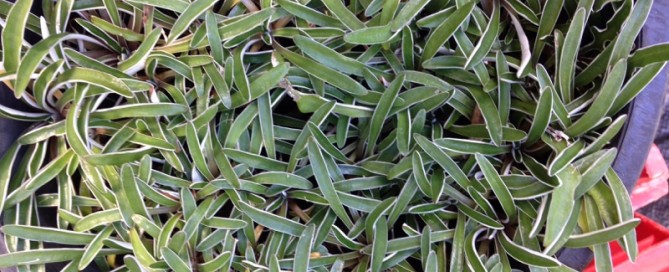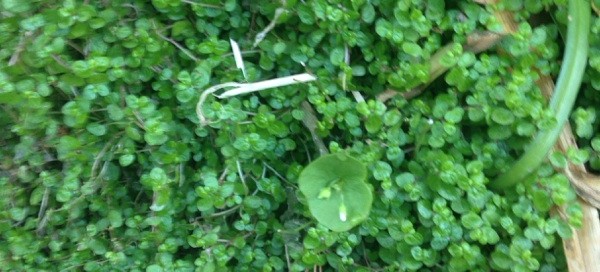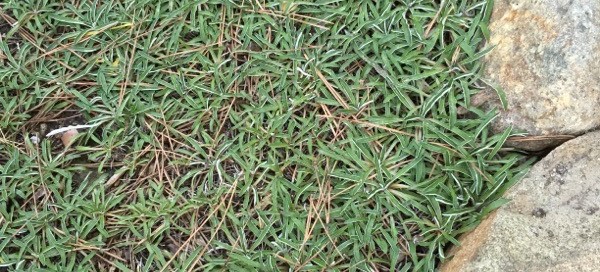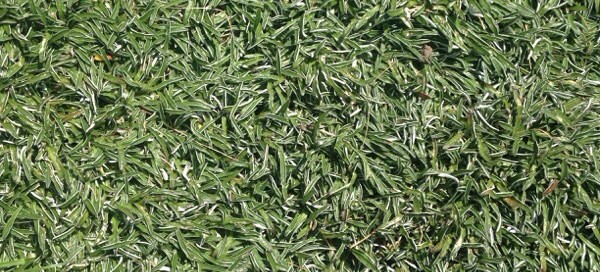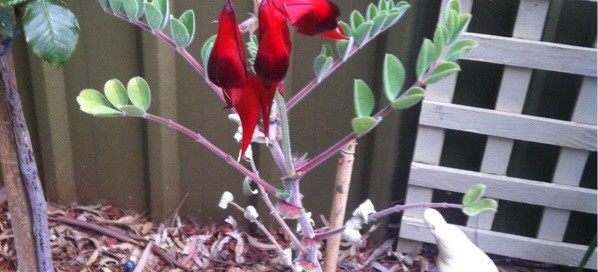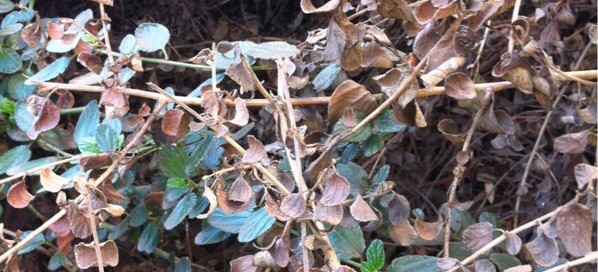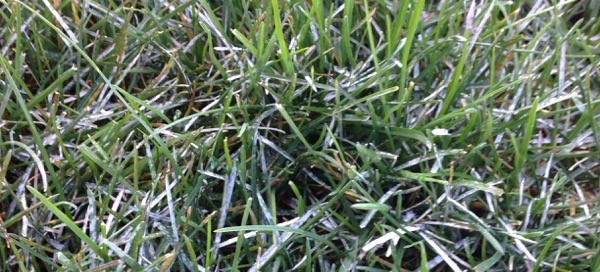Silver Carpet
This is a slowly spreading, very flat (just a few inches tall at best) groundcover with 1-2 inch long narrow leaves, that are a gray-green on top with white tomentosa beneath. Though flat to the ground, the white undersides are exposed to view as the leaf margins edges roll up and inward, particularly, when grown dry and thus giving the plant an appearance of being variegated. Small yellow daisy flowers bloom amongst the foliage in summer. Plant in full sun to light shade in a well-drained soil. This plants grows rapidly with irrigation, but it has deep succulent roots and can be very drought tolerant, though notably slower growing. It is hardy to about 25-30 degrees F. About the only things that this plant does not tolerate well is a heavy or otherwise non-draining soil and gophers.
